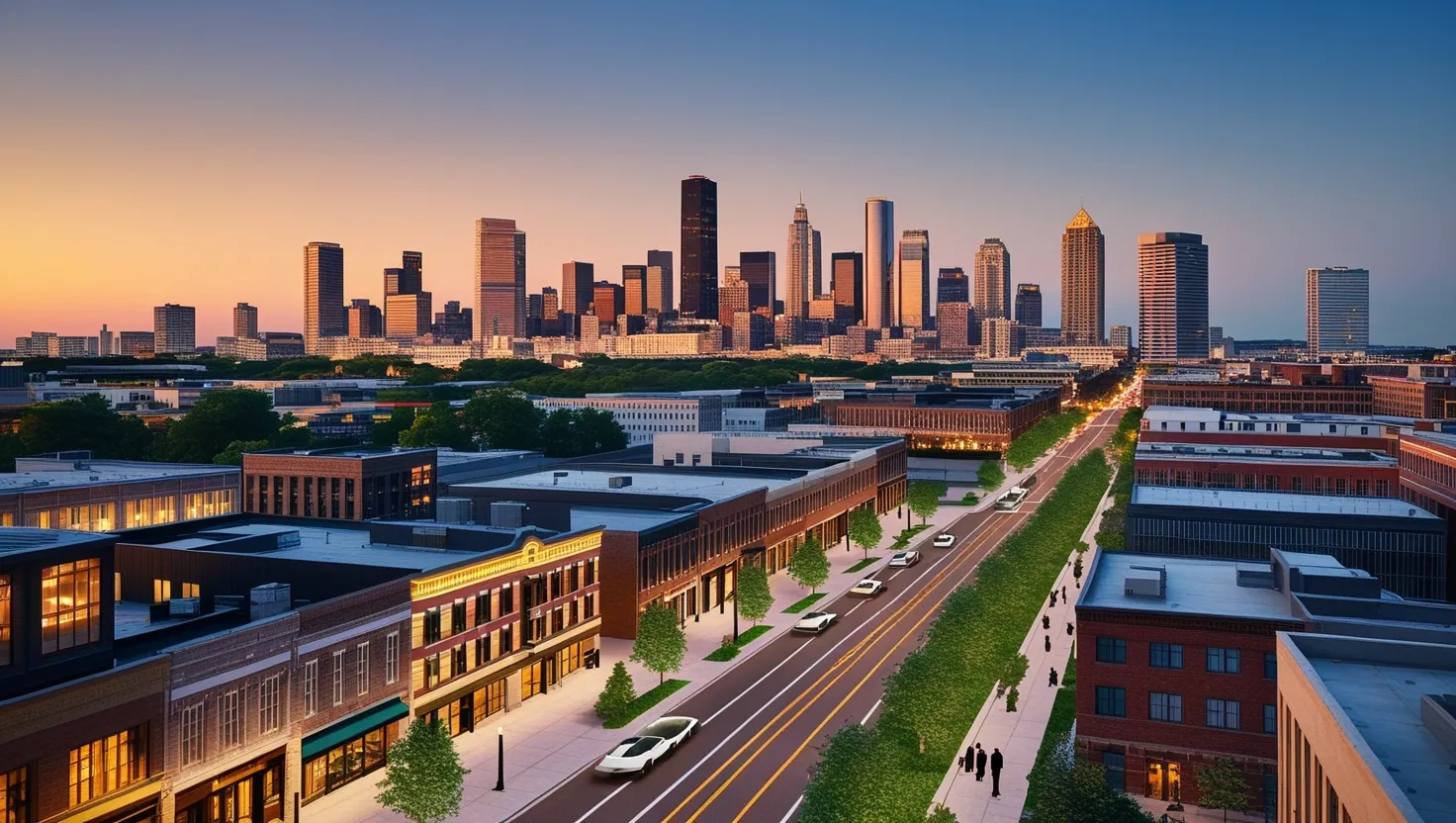As we navigate the complexities of modern urban life, it’s becoming increasingly clear that our cities need to be designed with a deeper understanding of our internal clocks. The field of chronobiology, which studies the biological rhythms that govern our lives, is revolutionizing urban planning in ways that could significantly improve our health, productivity, and overall quality of life.
Imagine a city where the timing of natural light exposure, activity patterns, and sleep cycles are all carefully considered in the design of public spaces, transportation systems, and building layouts. This is the vision behind chrono-urban design, an innovative approach that aims to align urban environments with the natural rhythms of the human body.
One of the pioneering examples of this approach is the town of Bad Kissingen in Germany, which has been transformed into the world’s first “ChronoCity.” Led by Dr. Thomas Kantermann, this project involves applying chronobiological principles to everyday life, restructuring civic life around the importance of sleep and a healthy circadian rhythm. The initiative began by gathering extensive sleep data from the entire town to better understand and meet the sleep needs of its residents.
In Bad Kissingen, adjustments have been made to school and work start times to align more closely with residents’ natural sleep patterns. For instance, the local secondary school delayed its start times after polling students and determining their chronotypes, which are individual differences in sleep-wake cycles. This change resulted in more sleep for students and an increased desire to participate in daily activities. Businesses are also encouraged to offer flexible hours, allowing employees to work during their most productive times of the day.
Lighting in public spaces and buildings has been optimized to support the natural circadian rhythms of residents. Unlike our bodies’ strong response to natural light, artificial light can disrupt our internal clocks, leading to more evening-type chronotypes in societies reliant on electrical lighting. The town has even considered abolishing daylight saving time to further support the natural sleep-wake cycles of its citizens.
This holistic approach extends beyond just individual health; it also impacts the broader social and economic fabric of the city. By making the city more attractive through innovative health-focused initiatives, Bad Kissingen aims to attract companies and skilled workers, particularly younger ones who are drawn to places that support their well-being. The concept of ChronoCity has become a strategic unique selling point for the town, positioning it as a global leader in health and lifestyle innovation.
The integration of chronobiology into urban planning is not just about individual health; it also has significant implications for public health and equity. The “15-minute city” concept, championed by experts like Prof. Carlos Moreno, aims to create cities where essential services are within a 15-minute walk or bike ride from home. This approach not only reduces greenhouse gas emissions and promotes active mobility but also enhances social cohesion and reduces stress.
Incorporating proximity into urban design can transform lifestyles by freeing up time, increasing physical activity, and strengthening community relationships. However, it’s crucial to address potential risks such as gentrification and ensure that these plans are inclusive and culturally sensitive. Comprehensive baseline assessments and diverse community engagement are key to implementing these plans effectively.
Urban planning has historically been influenced by ecological considerations, with pioneers like Frederick Law Olmsted and Patrick Geddes integrating nature into city designs. Modern approaches like landscape urbanism and ecological urbanism continue this tradition, emphasizing the importance of natural environments within urban settings. However, the incorporation of chronobiology adds a new layer of complexity, highlighting the need for cities to be designed in harmony with human biological rhythms.
The challenge of light pollution is another critical aspect that chrono-urban design must address. Artificial lighting, especially in the evening, can significantly disrupt circadian rhythms, leading to health issues such as sleep disorders and decreased productivity. By optimizing urban lighting to mimic natural light patterns, cities can mitigate these effects and create healthier environments for their residents.
The 24/7 economy also poses a significant challenge, as it often requires people to work irregular hours that conflict with their natural sleep-wake cycles. Chrono-urban design suggests that businesses should adopt flexible working hours and chronotype-optimized personnel planning to support the health and productivity of their employees. This approach not only benefits employees but also enhances the overall efficiency and competitiveness of companies.
In addition to these practical changes, there is a growing recognition of the importance of biological interactions within urban ecosystems. Urban planning must consider the biodiversity of cities, including the interactions between different species and the cycling of organic matter in soils. Managing biogeochemical cycles at the local scale can improve biodiversity and overall ecosystem health, which in turn supports human well-being.
The transformation of cities into chrono-urban environments is not a quick fix but a long-term project that requires the commitment of local authorities, businesses, and residents. The success of Bad Kissingen as a ChronoCity is a testament to what can be achieved when there is strong support from the mayor and the town council. By naming Dr. Kantermann as the “Chief Scientific Officer” of the project, the town demonstrated its serious intent to integrate chronobiology into its urban design.
As we look to the future, it’s clear that urban planning must evolve to incorporate the latest insights from chronobiology. By designing cities that align with our natural rhythms, we can create healthier, more productive, and happier communities. This is not just about individual well-being but also about creating sustainable and equitable urban environments that support the health and quality of life for all residents.
In conclusion, the integration of chronobiology into urban planning is a groundbreaking approach that has the potential to revolutionize how we live in cities. By considering the timing of natural light exposure, activity patterns, and sleep cycles, we can design cities that are more in tune with our internal clocks. This innovative approach is not just a theoretical concept but a practical solution that is already being implemented in cities around the world, promising a brighter, healthier future for urban dwellers.






